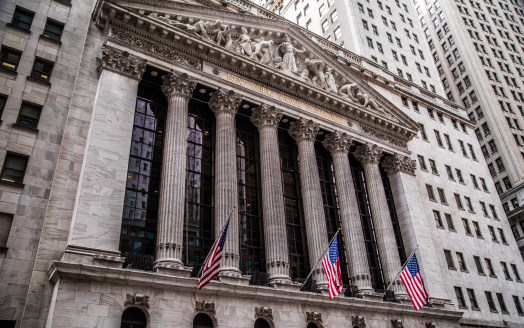
New GAO report shows continuing challenges of the Financial Stability Oversight Council.
In the wake of the financial crisis, one of the rare areas of relative consensus was that systemic risk played a role in exacerbating instability in the banking sector and capital markets. To combat this threat, the federal government created the Financial Stability Oversight Council (FSOC) which is now one of the most significant and widely criticized aspects of the 2010 Dodd-Frank Act. FSOC is broadly tasked with aggregating information from several federal agencies to assess and mitigate systemic financial risks. However, a recent report by the Government Accountability Office (GAO) found that FSOC might still be uninformed “about critical vulnerabilities in the financial system.”
“Systemic risk” is a complex and somewhat amorphous term, but can be likened to a broader manifestation of the traditional bank run, where depositors flee a specific institution because of concerns over its solvency. Whereas bank runs are largely mitigated through Federal Deposit Insurance, systemic risk impacts both regulated and ‘shadow banking’ systems – institutions encompassing $14.04 trillion of assets that arguably perform banking functions, but are not subject to the same regulations – and thus, cannot be resolved through deposit insurance alone, prompting FSOC’s creation as the “first-ever systemic regulator.”
FSOC operates as a coordinating forum – essentially, a mandatory set of processes, best practices, and research functions – for the nation’s 15 primary financial regulatory bodies, and is organized in a hub-and-spoke model chaired by the Secretary of the Treasury. FSOC’s mandated objectives are: identifying systemic financial risks, eliminating unique dangers posed by highly interconnected – ‘too big to fail’ – institutions, and maintaining financial stability. According to Professor Zvi Eckstein – the former Deputy Governor of the Bank of Israel and currently a Visiting Professor at the University of Pennsylvania’s Wharton School – in practice, FSOC’s role encompasses supervision of traditional financial institutions, oversight of “shadow banks,” and cooperation with other nations’ regulators.
The GAO’s report analyzes progress made by FSOC since the GAO issued a previous set of recommendations, and ultimately identifies three key sets of issues.
First, the GAO critiques FSOC’s internal processes and technological infrastructure, claiming that they are inadequate for its objectives. For example, the GAO found FSOC’s improvements in identifying emerging systemic threats through its Systemic Risk Committee to be insufficient due to over-reliance on individual member agencies’ unilateral identification of risks. Further, FSOC decided not to publicly disseminate its assessments of financial risks – information that the GAO felt policy makers and market participants “need to develop effective and timely responses to those threats.”
Second, the GAO was unsatisfied with FSOC’s accountability and transparency, paralleling the sentiment of some lawmakers and commentators. In particular, the report critiqued FSOC’s framework for designating systemically significant financial institutions (SIFIs). SIFI designation enhances oversight by subjecting such firms to “stricter government regulations in risk-based capital, leverage and liquidity,” but also inherently imposes costs, that some argue unduly temper economic activity. The GAO noted that additional clarity regarding FSOC’s SIFI designation process could assuage market concerns without compromising the Council’s independent oversight.
Finally, the GAO found that FSOC “could do more” to improve longstanding issues of inter-agency collaboration and coordination. FSOC’s complex power-sharing structure among numerous “independent agencies that retain existing authorities” inherently creates some tension, which may even be positive. However, the structure has resulted in jurisdictional conflicts, potentially hampering both the independence of member agencies and FSOC’s operational effectiveness.
Notably, prior to the enactment of Dodd-Frank, the U.S. Department of the Treasury submitted a proposal for regulatory reform that attempted to sidestep concerns over chronic infighting among regulatory agencies. Most importantly, the proposal empowered the Federal Reserve to act as the single market stability regulator – an approach similar to that taken by other advanced economies, such as Australia, Israel, and Canada. Although the potential for excessive concentration of regulatory power may raise its own concerns, the Treasury’s initial recommendation helps illustrate the range of potential alternative approaches.
Looking towards the future, Professor Eckstein noted that while FSOC has made “quite a lot of progress” in regulating traditional banks, oversight of non-traditional shadow banks has not yet been “tackled enough,” and international regulatory cooperation remains an ongoing effort.



